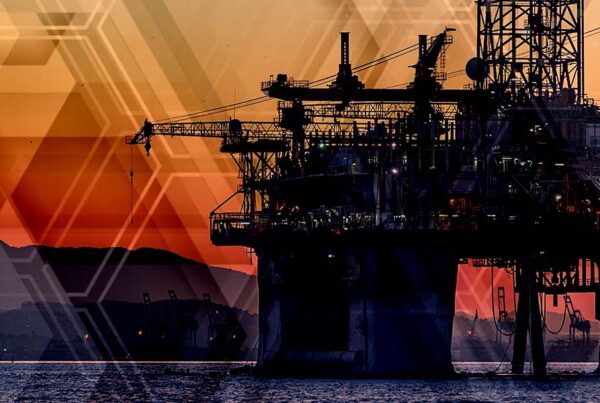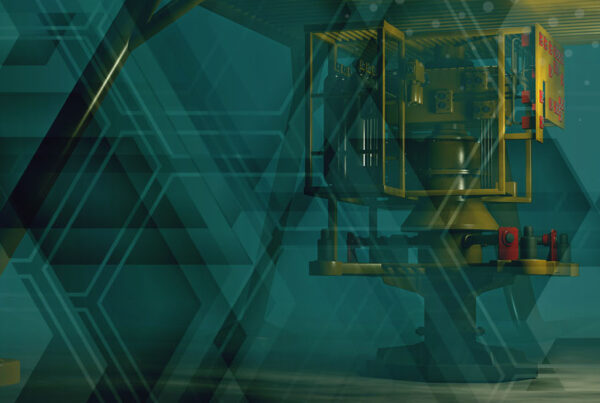APRIL 2025
As outlined in our Hydrogen White Paper, published in early April, we identified three critical areas that must be addressed for the European hydrogen market to unlock meaningful progress:
- Finalisation of enabling policy frameworks
- Allocation and evolution of funding mechanisms
- Implementation of demand-side mandates
While the industry awaits further movement in these areas, challenges across the hydrogen value chain continued in March. In this edition of Hydrogen Compass we will explore those headwinds alongside encouraging signs of momentum – from policy support and infrastructure project development to key production project milestones reached. These developments offer some optimism as the sector navigates towards broader commercial viability and steps forward on those three critical areas.
The next edition will be published in May. In the meantime, if you have any comments or feedback, please do reach out to Jun Sasamura ([email protected]).
Continued challenges faced in March
The hydrogen sector continued to face pressure across the value chain, from project developers and technology manufacturers to offtakers.
Notably, BP officially scrapped its HyGreen project in Teesside, which had targeted a capacity of 500MW by 2030. This decision reflects BP’s broader strategic shift to scale back low-carbon investments in favour of its core oil and gas business. The project had faced significant funding and offtake challenges – issues representative of the wider difficulties confronting the hydrogen sector. Although shortlisted for negotiations, HyGreen was not selected among the UK’s 11 winning Hydrogen Allocation Round (HAR) 1 projects at the end of 2023. Prospective offtakers such as Sembcorp, Ensus, and Tees Valley Lithium ultimately did not commit, further undermining the project’s viability. BP is, however, still committed to its 1200MW CCS-enabled hydrogen project – H2Teesside.
The strain in the industry also extended to technology manufacturers. Danish electrolyser manufacturer Green Hydrogen Systems (GHS) announced the layoff of 89 employees as part of a court-led corporate restructuring. The company, grappling with severe financial distress and mounting debt obligations, faces the risk of bankruptcy. In response, GHS proposed a reconstruction plan involving selling assets, raising new capital, and additional cost-cutting measures.
Downstream, the offtake market also showed signs of instability. Thyssenkrupp CEO Miguel Angel Lopez Borrego warned[1] that the company’s €3bn green steel plant in Duisburg – currently under construction – risks becoming a stranded asset without reliable, affordable access to renewable hydrogen. Although the project secured €2bn in government funding, the current volumes and prices are not sufficient nor competitive to supply its direct-reduced iron (DRI) production process. Borrego called for adjustments to funding frameworks and urgent investment in hydrogen pipeline infrastructure across Germany and Europe to enable economically viable green steel production.
Reflecting these cost pressures, Thyssenkrupp was forced to suspend its €3bn hydrogen procurement tender in March after bids came in significantly above expected price levels.
Yet, there were signs of progress
Despite persistent challenges, several developments in March offered some reasons for optimism with public funding announcements, policy updates, and key progress made in infrastructure and production projects across Europe.
Government support
In early March, the Spanish government announced plans to allocate up to €400mn from its post-Covid recovery fund towards the European Hydrogen Bank’s (EHB) Auction-as-a-Service (AaaS) scheme. Under this scheme, EU member states can bolster the funding for hydrogen projects by supporting additional, next-best projects that do not secure funding through the primary EHB auction process. The final funding amount will depend on the outcome of the H2 Valleys programme, which is under evaluation by the Institute for Energy Diversification and Savings (IDEA).
Germany also received EU approval for a €5bn subsidy scheme to help industries decarbonise using hydrogen, carbon capture and electrification. Through 15-year Carbon Contracts for Difference (CCfD), companies will be compensated for the extra costs of cleaner technologies. This includes support for fuel switching and electrification in sectors such as cement, chemical and steel production. Funding will be awarded via competitive auctions, prioritising the lowest cost per tonne of CO2 avoided. This marks the second round of the scheme, following €2.8bn awarded in 2023.
Meanwhile, the UK government proposed an exemption to renewable hydrogen producers from the Climate Change Levy (CCL) – a tax on energy consumption – in an effort to level the playing field with CCS-enabled hydrogen producers, who are already exempt for their natural gas feedstock. With electricity accounting for around 70% of renewable hydrogen production costs, this move could significantly improve project economics. A final decision will follow the public consultation ending in early May.
Infrastructure
In March, Germany made substantial progress in building its hydrogen core network. Gascade began filling the initial section of the first 400km phase of its Flow hydrogen pipeline, which is expected to be completed by the end of the year. Part of Germany’s planned 9,000km core network, the full Flow pipeline will span 1,630km from Northern Germany (Rostock and Lubmin) to key industrial hubs, including Berlin, Leuna, Leipzig and Stuttgart, with a total capacity of 20GW of renewable hydrogen.
Nowega also advanced its portion of the network, commissioning a 55km segment of the network between Lingen and Bad Bentheim in Lower Saxony, using 95% repurposed infrastructure. An extension to Legden is planned for late 2025. This segment will support RWE’s 300MW GET H2 Nukleus project in Lingen.
In Belgium, Fluxys broke ground on the first segment of its national hydrogen pipeline network, connecting the port regions of Antwerp and Ghent through Kallo and Zelzate. This initial phase, valued at €330mn, is supported by a €95mn grant from the EU’s post-Covid Recovery and Resilience fund, administered through the Belgian government, and is scheduled to be operational next year.
In the UK, UK Oil & Gas (UKOG) released an economic impact report on its planned South Dorset hydrogen storage facility. While the £800mn project is still in the design and permitting phase, the four-year build is projects to contribute £665mn to the economy. The facility could play a pivotal role in supporting decarbonisation of the Solent Cluster, including aviation and maritime sectors.
Project progress
Three projects, in particular, made noteworthy progress in March.
TotalEnergies’ signed a long-term agreement with RWE to purchase 30,000 tonnes of renewable hydrogen annually from RWE’s 300MW GET H2 Nukleus project. While GET H2 Nukleus will start up in 2027, the contract with TotalEnergies is set to begin in 2030 and extend for 15 years until 2044. The renewable hydrogen, produced in compliance with EU’s Renewable Fuel of Non-Biological Origin criteria, will be used at TotalEnergies’ Leuna refinery in Saxony-Anhalt, nearly 400km from the production site. This contract is significant, as many projects have struggled to secure offtake, with the looming EU RED III[2] mandates no doubt playing a role in reaching this milestone.
BASF commissioned its renewable hydrogen project at its Ludwigshafen site in Germany, featuring a 54MW PEM electrolyser supplied by Siemens Energy. The project had been designated an Important Project of Common European Interest, receiving €124.3mn from the German government. BASF aims to use most of the renewable hydrogen produced to replace grey hydrogen currently used in the production of ammonia, methanol and vitamins at the site.
Norwegian Hydrogen reached a final investment decision (FID) to develop a 25MW renewable hydrogen facility in Rjukan, southern Norway, with an estimated investment of NKr 750mn ($71.5mn). Purchased earlier this year from Aker Horizons, the project will utilise hydropower under a long-term agreement with local utility Tinn Energi. Scheduled to commence operations by late 2027, the facility will supply renewable hydrogen to existing and new customers across southern Norway and Sweden. An initial letter of intent with Nel to supply electrolysers remains active, pending a formal order.
The long-term contract signed by TotalEnergies and the commission of BASF’s renewable hydrogen project represent concrete steps forward in decarbonising existing industrial operations. These developments reflect a broader shift in focus towards pragmatic, near-term decarbonisation, especially in sectors where hydrogen use is already established. As regulatory mandates like the EU’s RED III are coming into force, it is likely that the industry will see continued momentum in similar projects – where infrastructure exists, and demand is clear. Meanwhile, Norwegian Hydrogen’s progress highlights the advantages of operating within a renewable electricity grid, showing how local conditions can accelerate project viability.
Key European Project Watch
| Project | Update |
| HyTechHafen Rostock | HydrogenPro has been selected to supply a 100MW electrolyser plant for the HyTechHafen Rostock project, a renewable hydrogen initiative led by Andritz at Rostock Port, Germany. Andritz will provide the plant on an engineering, procurement and construction basis, utilising pressurised alkaline electrolysis technology. The project was commissioned by Rostock EnergyPort Cooperation (REPCO), a joint venture involving RWE Generation SE, EnBW Neue Energien, RheinEnergie and Rostock Port. The FID is expected by mid-2025, with commissioning scheduled for 2027. Once operational, the hydrogen produced will be distributed via Germany’s Hydrogen Core Network (HCN). |
| Speyside Hydrogen Facility | Storegga has officially submitted a planning application to Moray Council for its Speyside Hydrogen Facility, a renewable hydrogen project aimed at reducing carbon emissions from Scotland’s whisky industry. The proposed facility, located in Marypark, Ballindalloch, plans to produce up to 25 tonnes of renewable hydrogen per day using electrolysis, with operations targeted to start next year pending approval. Designed to support the decarbonisation of local distilleries, the project will be built in phases, with the first two phases expected to deliver a combined 70MW of capacity through two electrolysers. |
| La Robla Green | Técnicas Reunidas and Siemens Energy have been commissioned by Reolum to design the front-end engineering of the La Robla Green e-methanol plant in León, Spain, one of Europe’s largest renewable methanol projects. The facility, with a production capacity of 140,000 tonnes of methanol per year, will combine biogenic carbon from a biomass cogeneration plant with renewable hydrogen to produce e-methanol. Siemens Energy will develop the renewable hydrogen unit, while Técnicas Reunidas will focus on carbon capture and e-methanol production. The project is supported by €180mn from Next Generation EU funds and the electrolyser will have a capacity of 200MW when it comes online in 2028. |
| North Lincolnshire Green Energy Park | The UK Energy Secretary has given a Development Consent Order (DCO) to the North Lincolnshire Green Energy Park (NLGEP) which is an integrated carbon capture, hydrogen and waste-to-energy project. The NLGEP will convert up to 760,000 tonnes of waste annually into low-carbon electricity and hydrogen. The project will generate 95MW of electricity to power homes and a 10MW electrolyser for the production of hydrogen. A hydrogen refuelling station is planned to be constructed at the site with the project also targeting potential industrial supply. Up to 650,000 tonnes of CO2 emissions will be captured and stored in the North Sea or used in concrete production. The site will also include a plastic recycling facility. Construction is expected to begin in 2026 and the project is expected to come online in 2030. |
| Aberdeen Hydrogen Hub | Hydrasun has selected a 2.5MW PEM electrolyser from Nel for the Aberdeen Hydrogen Hub in Scotland, a project led by BP and Aberdeen City Council. Hydrasun will also be responsible for designing and building the hub’s refuelling station. FID was taken on the hub last year. |
| H2 Lubmin | H2Apex has agreed to acquire HH2E’s 1GW electrolytic hydrogen project in Lubmin, Germany, after HH2E filed for insolvency in November 2024. The €7mn deal, pending court approval, grants H2Apex ownership of land at the former Greifswald nuclear site, which has a grid connection and water supply. HH2E had signed a €45mn contract with a local construction firm but had yet to reach FID on the first 100MW phase. |
Jun Sasamura, Manager – Hydrogen
[email protected]




